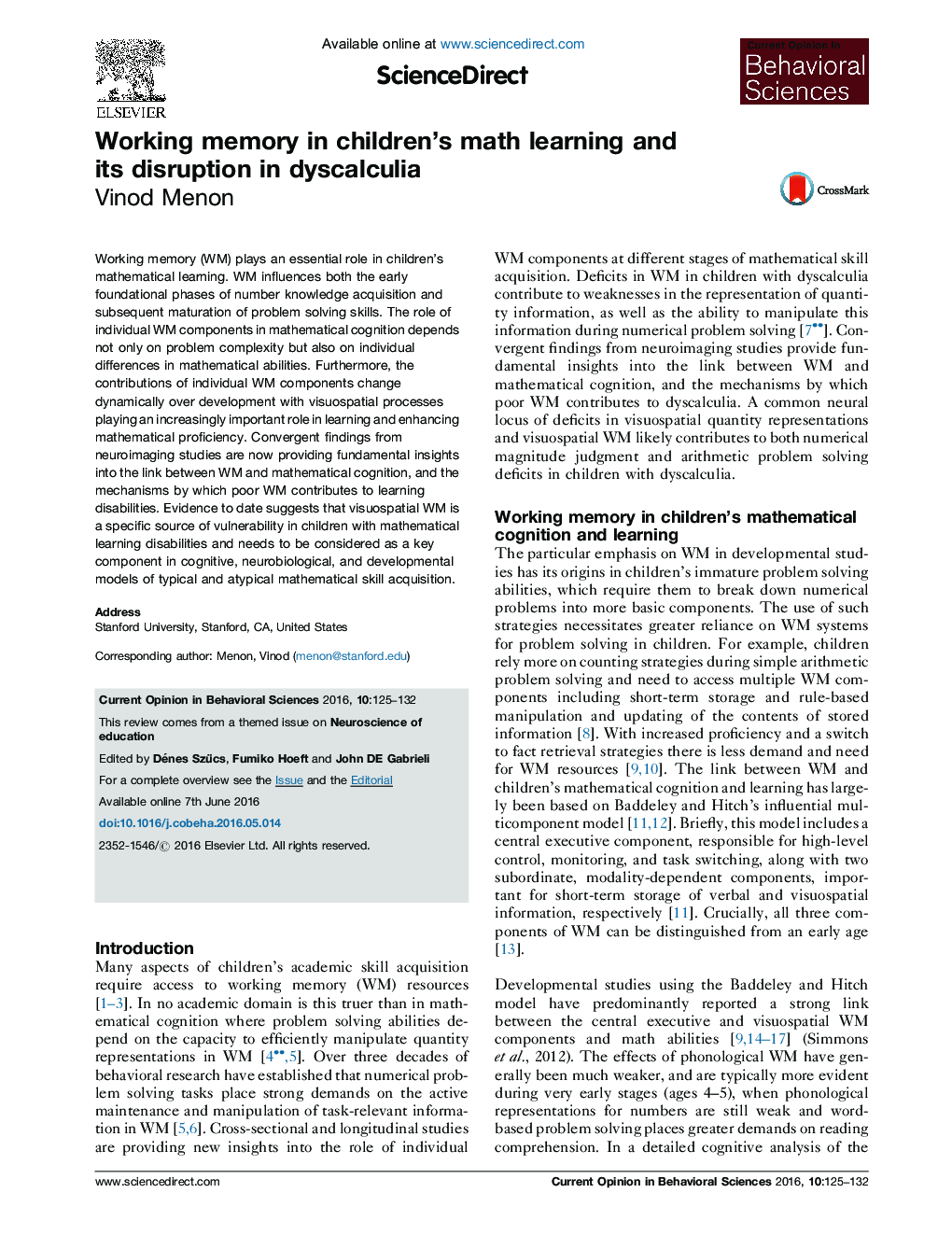| کد مقاله | کد نشریه | سال انتشار | مقاله انگلیسی | نسخه تمام متن |
|---|---|---|---|---|
| 6260377 | 1613080 | 2016 | 8 صفحه PDF | دانلود رایگان |
- Working memory (WM) plays an integral role in children's mathematical learning.
- WM influences ability to efficiently represent and manipulate quantity.
- WM components play distinct roles at different developmental stages.
- Visuospatial WM is a specific source of vulnerability in dyscalculia.
- Brain circuits and mechanisms linking WM with mathematical cognition identified.
Working memory (WM) plays an essential role in children's mathematical learning. WM influences both the early foundational phases of number knowledge acquisition and subsequent maturation of problem solving skills. The role of individual WM components in mathematical cognition depends not only on problem complexity but also on individual differences in mathematical abilities. Furthermore, the contributions of individual WM components change dynamically over development with visuospatial processes playing an increasingly important role in learning and enhancing mathematical proficiency. Convergent findings from neuroimaging studies are now providing fundamental insights into the link between WM and mathematical cognition, and the mechanisms by which poor WM contributes to learning disabilities. Evidence to date suggests that visuospatial WM is a specific source of vulnerability in children with mathematical learning disabilities and needs to be considered as a key component in cognitive, neurobiological, and developmental models of typical and atypical mathematical skill acquisition.
Journal: Current Opinion in Behavioral Sciences - Volume 10, August 2016, Pages 125-132
